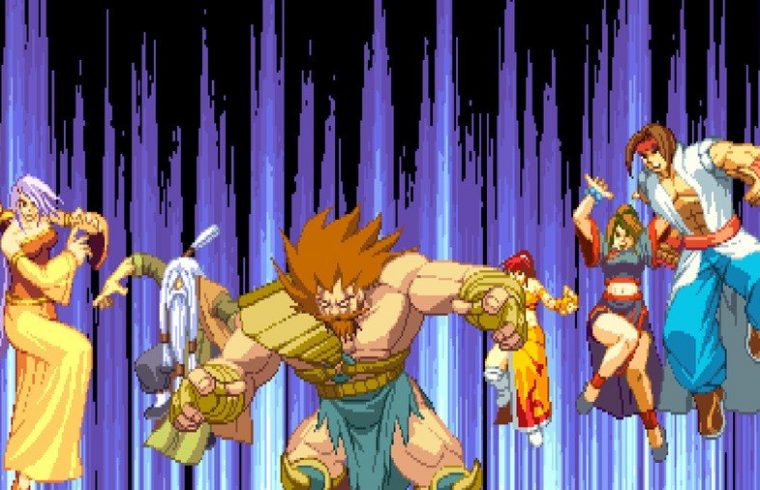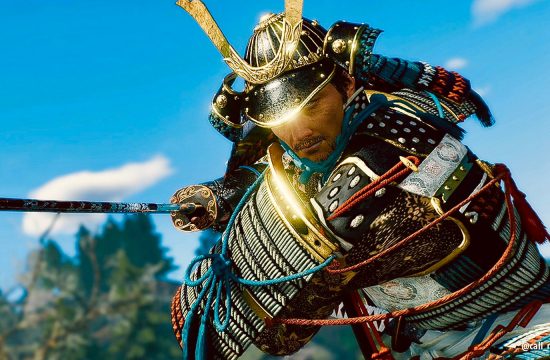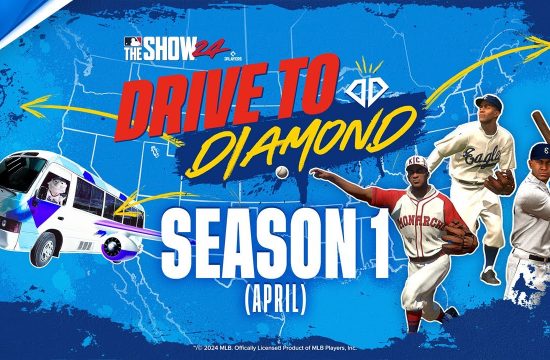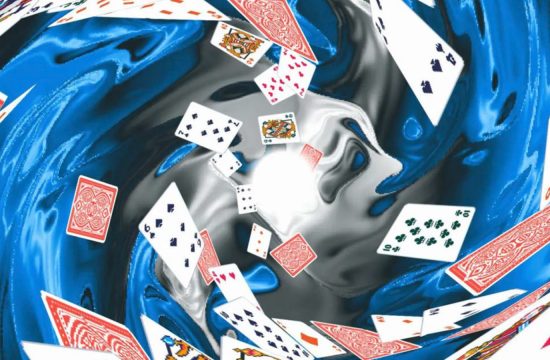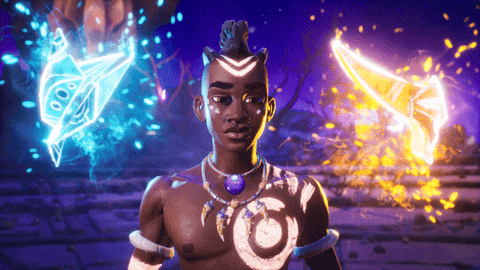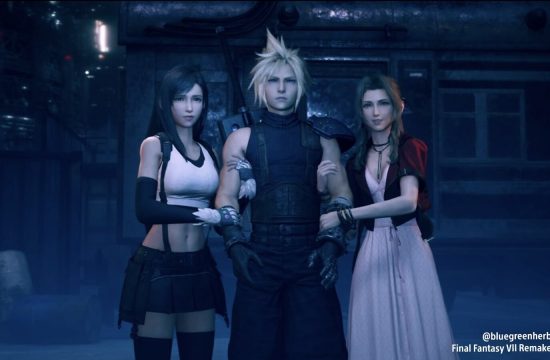As we mentioned in our recent feature, the Switch’s extensive and ever-growing list of retro arcade re-releases has given fans of this cozy niche plenty to celebrate — but there’s always room for improvement, and there are plenty more arcade classics that haven’t yet arrived on Switch (or any console, for that matter).
So we’ve made a list of ten arcade classics we’d love to see come home, and to keep it interesting we’ve given ourselves one golden rule to stick to: Our picks must have a realistic chance of actually appearing on the Switch. Well… if not realistic then at least not obviously completely impossible from the start. So however much fun Namco’s fantasy exercise-’em-up Prop Cycle and Sega’s Top Skater were in arcades, the massive novelty controllers integral to those experiences (an exercise bike and a skateboard-ish platform, respectively) make it clear those games just can’t come home.
The same goes for licensed titles too. Do we love Star Wars Arcade? Yes. Is there any realistic chance at all of Sega freeing it from its 32X-shaped home prison, even if they desperately wanted to? Probably not (there’s a desire to see it from Sega and M2, but the onus is on Disney to grant the licence again). This is also true for anything involving Konami and teenaged turtles, Cadillacs, and dinosaurs, or any game from anyone at all, ever, featuring a certain acid-blooded xenomorph (with the exception of AVP on the Capcom Home Arcade not-so-mini console). Look, we know. Consider our list a reminder that even with all those games locked in contract hell, there’s still more than enough out there to (potentially) look forward to.
So, let’s take a look at our most wanted arcade ports on Switch.
Mach Breakers (Namco, 1995)
It’s the Olympics, if the Olympics were less concerned with chucking javelins at patches of grass or leaping over sand and spent more time making athletes pull a Godzilla-like monster through a city or blasting sci-fi turrets with their unexplained superpowers.
What makes this game great is that as dramatic as it looks to smash blocks of ice with your knees in a reimagined version of the hurdles, success in every event hinges on good timing, quick reactions, and a strong sense of rhythm.
The Outfoxies (Namco, 1995)
Seven assassins are hired to assassinate… each other (really) in this pre-Smash item-strewn arena-based fighter. One of them has a well-trained lizard. Another rides a killer wheelchair of their own design.
We’re confident this is the only game ever made that allows you to fire a rocket launcher at a murderous chimpanzee wearing a top hat, knocking them back into a tank full of hungry piranhas.
Martial Masters (IGS, 1999)
This beat ’em up uses smooth SNK-rivalling animation to mesmerising effect on some visually stunning martial art styles, making every match feel like the best action movie you didn’t know existed. The interesting cast avoid the usual pitfalls of other newcomers to the genre, with no obvious clones of Ryu, Chun Li, and the rest of Street Fighter‘s iconic cast in sight.
This uniqueness does mean the game takes longer to warm up to than some others, but those who spend time with it are well rewarded.
SegaSonic the Hedgehog (SEGA, 1993)
An analogue stick may not be the perfect replacement for the arcade original’s trackball controls but it’s infinitely preferable to never getting to play this cartoonishly joyful adventure where Sonic, Ray, and Mighty are thrown around all over the place by Eggman’s egg-sessive (sorry) tricks and traps.
The isometric angle may not seem like the best way to view Sonic’s leaps and loops but in practice it’s as fast-paced and showy as ever, the perfect marriage of arcade showmanship and Sonic’s signature speed.
Golden Axe: The Revenge of Death Adder (SEGA, 1992)
The all-new cast may make people watching the attract sequence yearn for the good old days of playable Ax, Tyris, and Gilius (the similarly blue-panted warrior here is a man named Stern), but once the first credit’s gone in you’ll be too distracted by the extreme detail in the incidental animations — enemies will sit chomping on food or laughing amongst themselves before you and up to three other friends show up to wreak havoc — and too busy enjoying the game’s relatively in-depth combat system to mind.
This is a fantastic sequel that combines everything everyone remembers about the original — kicking little elves for food and potions, bizarre creatures to ride, spectacular spells — and then elevates it with countless fresh twists and gorgeous details.
Cotton Boomerang (Success, 1988)
This is the first game on our list to have already had a home port, a Japan-only Sega Saturn exclusive that is now so expensive just seeing its name removes money from your bank account (we apologise for that).
It’s a real shame that this cute ’em up is now completely out of reach for so many because this is a beautiful and energetic arcade title with a fun grab/throw chain mechanic (who doesn’t want to lob an unsuspecting goblin at an incoming wave of bats?) and memorably strange enemies, from small flaming demon heads right up to giant pumpkins and ghostly suits of armour.
Time Gal (Taito and Toei Company, 1985)
Time Gal’s an FMV experience very much like Dragon’s Lair, and as authentic a slice of 1985 arcade gaming as you can get. The exciting action, superb animation and amusing death sequences make this well worth a play, especially if Taito finally gave us the game in its original laserdisc-quality glory.
The format means Time Gal’s a short and obviously predictable experience once you know how to react to each scene but in the heat of the moment, when capital-D Death is chasing after our green-haired heroine Reika or she’s narrowly avoiding getting stomped on by woolly mammoth, you’re having far too much fun to care.
Mars Matrix (Capcom, 2000)
Mars Matrix had a Dreamcast port twenty years ago and… that was it. A shmup this good deserves better than that. This Takumi-developed one uses a unique single-button shot system, where one of four possible actions are triggered depending on whether you tap or hold the button. Key to your high score table success and more immediate survival is mastery of the barrier system, a player-activated shield that enables your ship to collect bullets and then throw them back at enemies, generating point-boosting items in the process.
It’s one of those shmups that takes a while to master but when you do, your bullets, lasers, and shiny golden collectables will fill the screen and you’ll be expertly weaving through the deadly crowd like they’re not even there.
The Gladiator (IGS, 2003)
A cooperative side-scrolling brawler featuring lush animation and multiple routes through the story from the same stable that gifted arcade gaming Martial Masters (and more). The six playable characters on offer all play very differently from each other and the detailed combo/special move system rewards practise and skill over idle button mashing, making The Gladiator more technical, inventive, and satisfying than the “Hit everything with a pipe” and “Jump-kick denim wearing gang members” gameplay weaker scrolling beat ’em ups tend to fall back on.
Osman (Mitchell Corporation, 1996)
Also known as Cannon Dancer, this 1996 action game has you athletically leap around the screen and explosively kick your way through blazing deserts and futuristic cities, climbing straight up vertical walls, hanging off ceilings, and rushing down steep inclines away from pursuing enemies. Osman’s got a distinctly Strider-ish tone, but it’s not a ripoff: It feels so Strider-y because it was designed Kouichi Yotsui – the same guy responsible for arcade Strider’s level design. You can’t really rip off yourself, can you?
We Await Your Return, Warrior!
This list is nothing more than a light sample of arcade gaming’s seemingly limitless potential, and in an odd sort of way that’s part of the wonder of arcade games. When will ever get to play Virtua Cop 3 on our own TVs? How long has it been since Bishi Bashi last made it home? Why did Sega not release a Sangokushi Taisen game on 3DS after the success of the previous two DS ports and the ongoing popularity of card-battling games? Same as always, right?
Wrong.
There’s a real change going on in retro game ports right now; the companies holding these licenses are listening, and they’re taking note of what gamers are buying. Sega hasn’t produced five Game Gear Micros for the fun of it. Hamster doesn’t keep surprising us with arcade treats every month out of the goodness of its heart. SNK games wouldn’t be on everything if nobody was prepared to buy them.
We aren’t going to see retro arcade ports topping the charts any time soon but there’s little doubt the genre’s carving out an entertaining — and sustainable — niche for itself on the Switch.
Let us know your favourites from the selection above, and your own suggestions for arcade games you’d love to play on Switch.


